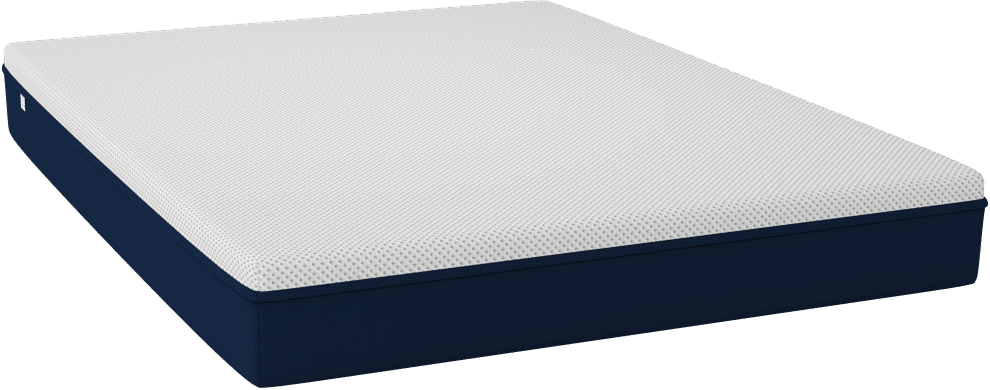Best Mattress of 2021
The best mattress should ease pain, not cause it, support your posture, not misalign it, and let you sleep deeply, not toss and turn all night.

While today we think of the word “best” as meaning “the highest quality,” the origins of the word point to a slightly different meaning— remedy. We all want to sleep well, but so many of us aren’t getting the sleep we need. Your mattress should be a remedy, not a barrier to that sleep.
When you’re looking for the best mattress, the best bed for you may not be a good fit for someone else and vice versa. This becomes even trickier when that other person is sharing your bed!
Above all, your ideal mattress should ease pain, not cause it, support your posture, not misalign it, and let you sleep deeply, not toss and turn all night. Other factors to consider are budget, best mattress type (yes, there’s more than just innerspring beds out there now!), different firmness levels and more.
In this article, we’ll go over everything you need to know before you buy a new mattress, what you can expect from the best mattresses on the market today, and how to choose one based on a wide variety of circumstances and preferences.
Here are Amerisleep’s best mattresses of 2021:
Quick Guide: A 30-Second Summary
| Best Overall Mattress | Amerisleep AS3 |
| Best Hybrid Mattress | Amerisleep AS5 Hybrid |
| Best Mattress for Back Sleepers | Amerisleep AS2 |
| Best Firm Mattress | Amerisleep AS1 |
| Best Mattress for Side Sleepers | Amerisleep AS4 |
| Best Luxury Mattress | Amerisleep AS5 |
| Best Natural Mattress | Amerisleep Organica |
1. Best Firm Mattress: Amerisleep AS1
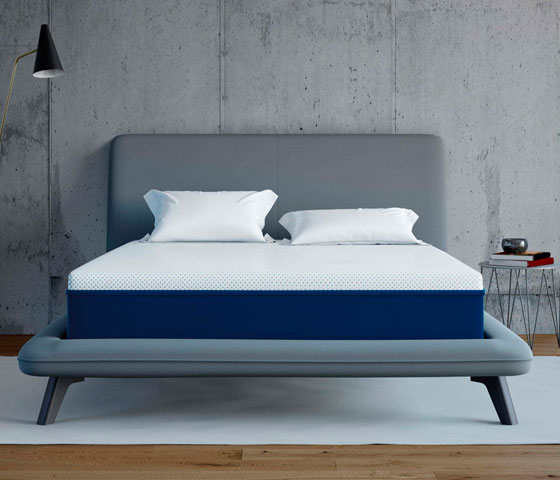 The AS1 is Amerisleep’s firmest mattress, making it an excellent choice for stomach and back sleepers.
The AS1 is Amerisleep’s firmest mattress, making it an excellent choice for stomach and back sleepers.
The Amerisleep AS1 is the firmest model in our lineup, making it great for back and stomach sleepers who need steady, consistent support.
There’s virtually no give to this mattress, but that doesn’t mean there’s no cushioning—a two-inch-thick layer of Bio-Pur® on the top provides just the right amount of neutral alignment for your spine and padding for sensitive pressure points.
Beneath the layer of Bio-Pur® lies eight inches of high-density foam called Bio-Core®, which creates the firm feel. The AS1 has the thickest layer of Bio-Core® compared to the other Amerisleep models.
Quick Summary:
- Amerisleep’s firmest model is best for stomach and back sleepers
- Two inches of Bio-Pur creates a soft but steady surface to rest on
- Bio-Core® layer ensures the mattress won’t sag after years of use
- Advanced open-cell foam keeps you cool and comfortable
2. Best Mattress for Back Sleepers: Amerisleep AS2
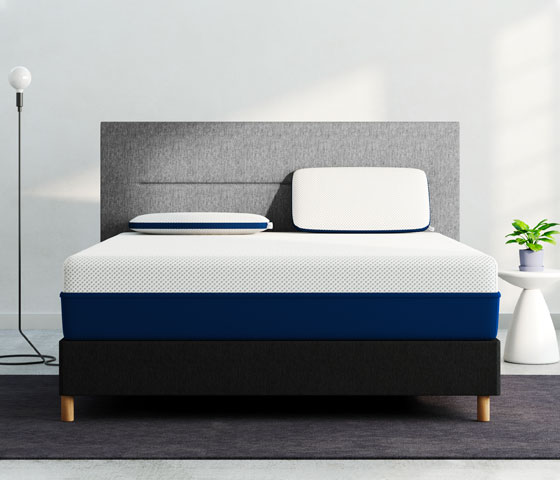 A medium-firm model with a slightly more cushioned feel.
A medium-firm model with a slightly more cushioned feel.
The AS2 is a medium-firm mattress with a slightly thicker comfort layer than the AS1. Back and stomach sleepers who want a bit more cushioning typically favor the AS2 over the AS1.
Our AS2 is also available as the AS2 Hybrid, a more responsive version of our medium-firm model better suited for those who prefer a bouncier bed.
Between the Bio-Pur® and Bio-Core® layers sits the Affinity layer with HIVE® technology. This transition foam relieves pressure points that often build up in the shoulders, back, spine, and hips. Additionally, it keeps you from dipping too far into the bed, which can cause stiffness or aching upon waking.
The main difference between our memory foam AS2 and our hybrid AS2 is their base layers—in our all-foam models, we feature Bio-Core® to provide sturdy support, whereas, in our hybrid mattresses, we include targeted pocketed coils, instead. Our hybrid models also do not contain HIVE®, as they provide zoned support through the pocketed coils.
Heavyweight sleepers usually prefer the AS1 or the AS2 because they have such sturdy support with very little sinkage. Business Insider ranked the AS2 as the “best mattress for back pain.”
Quick Summary:
- Affinity transition layer buffers between Bio-Core® and Bio-Pur® layers for extra support
- HIVE® technology relieves pressure points and dissipates heat
- Medium-firm feel gives stomach and back sleepers slightly more cushioning than the AS1
- Limited motion transfer thanks to the advanced open-cell foam
3. Best Overall Mattress: Amerisleep AS3
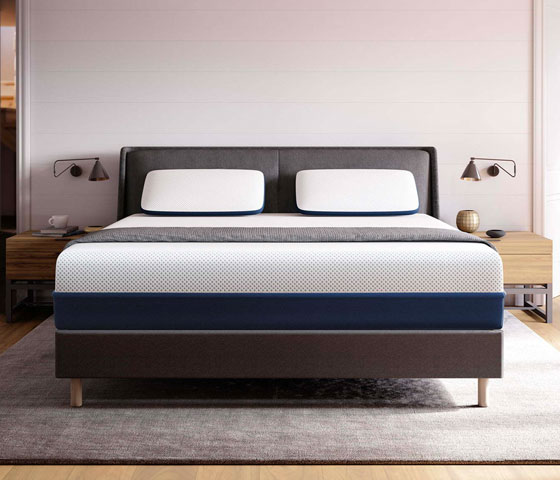 Amerisleep’s top-selling mattress thanks to its versatile, medium feel.
Amerisleep’s top-selling mattress thanks to its versatile, medium feel.
The AS3 is Amerisleep’s best selling mattress, perhaps because it’s the perfect medium feel— an extremely versatile pick for side, back, and even some stomach sleepers.
Like our AS2, our AS3 also has a hybrid counterpart. Our AS3 Hybrid is great for those who like an even balance of comfort and support but prefer a bouncier mattress. It’s also great for hot sleepers since it allows for better airflow than the all-foam AS3.
In our AS3 (both hybrid and memory foam models), the Bio-Pur® layer is 3 inches thick and responds quickly to your changing positions during the night—and because it’s so adaptable, it isolates motion to prevent sleep disturbances.
In our memory foam AS3, our Bio-Pur® layer is followed by 2 inches of Affinity with HIVE® technology, and 7 inches of Bio-Core®. In our AS3 Hybrid, the Bio-Pur® is followed by 8 inches of pocketed coils and a thin base layer of foam. Even though our hybrid mattresses contain coils, they still hinder motion transfer because they’re pocketed.
Quick Summary:
- Three inches of Bio-Pur® create a comfortable, cool sleeping surface
- Has a balanced medium firmness ideal for side and combination sleepers
- Even support from the Bio-Core layer keeps the bed from sagging
- Adjusts to your sleeping position while relieving pressure points
- Ranked Best Mattress Overall on Sleep Junkie
4. Best Mattress for Side Sleepers: Amerisleep AS4
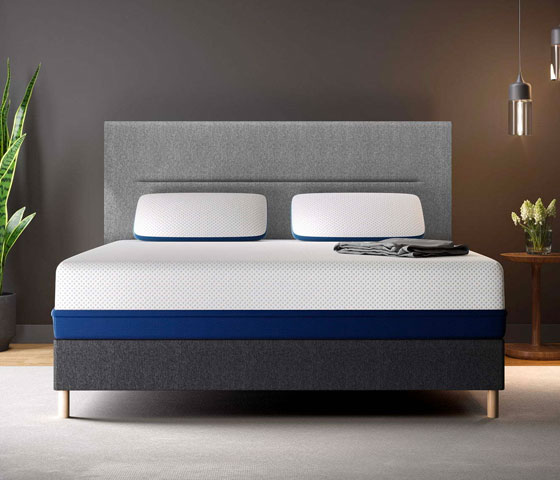 Slightly softer model than the AS3 with extra Bio-Pur® cushioning.
Slightly softer model than the AS3 with extra Bio-Pur® cushioning.
The Amerisleep AS4 is medium-soft— ideal for side-sleepers who want a plusher sleeping surface but don’t want to sink down too far.
Like the AS2 and AS3, the AS4 has an Affinity layer with HIVE technology®, minimizing pressure points and ensuring you stay comfortably on top of the mattress instead of sinking too deeply into it, which can throw off your posture and cause pain.
Quick Summary:
- Medium-soft offers more padding and plush support for side-sleepers
- Minimizes pressure points so you don’t wake up in pain
- Bio-Core® layer keeps you lifted and supported without sinking
- HIVE® layer prevents misalignment and stiffness
5. Best Luxury Mattress: Amerisleep AS5
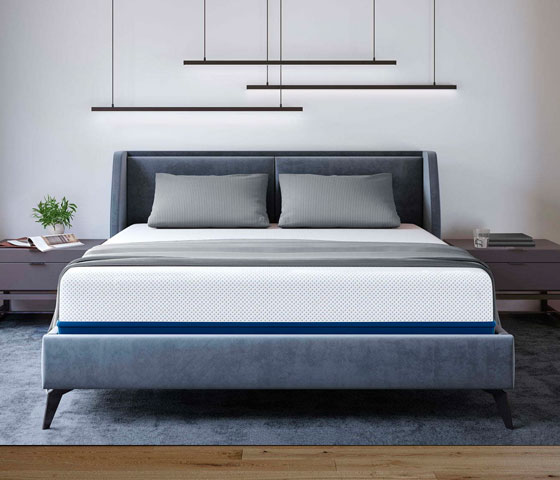 Amerisleep’s softest model simultaneously supports and cushions pressure points.
Amerisleep’s softest model simultaneously supports and cushions pressure points.
The AS5 is Amerisleep’s softest and thickest mattress— it’s also the only mattress in our lineup with the Active Flex layer, a responsive comfort foam sitting between the Bio-Pur® and the Affinity layers. The Active Flex bounces back quickly, so even though this mattress is quite soft, you shouldn’t feel stuck, trapped, or wake up hot in the middle of the night while using it.
We also offer a hybrid version of our luxurious AS5 mattress—the AS5 Hybrid. Our AS5 Hybrid contains sleep-enhancing Bio-Pur® and Active Flex, but as the other hybrids featured, contains pocketed coils instead of a Bio-Core base. Our AS5 is soft and bouncy, but the pocketed coils included isolate motion quite well and provide targeted support to prevent discomfort.
While our AS5 is a soft mattress, we design both the memory foam AS5 and hybrid AS5 to accommodate sleepers over 250 pounds, ending the search for a soft but supportive mattress.
Quick Summary:
- Bio-Pur® provides the deepest cushioning for side and combo sleepers
- Active Flex layer responds quickly to every movement, isolating motion
- Advanced open-cell foams move air through the mattress, keeping it cool
- Bio-Core® prevents sagging and dipping, despite the mattress’s softness
6. Best Natural Mattress: Amerisleep Organica
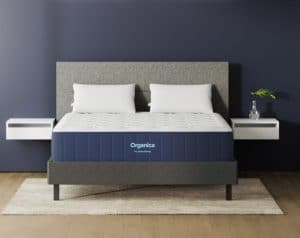 Has natural cotton fabric, plush wool, contouring Talalay latex and supportive Dunlop latex.
Has natural cotton fabric, plush wool, contouring Talalay latex and supportive Dunlop latex.
The Amerisleep Organica is our most eco-conscious mattress. We strive to be eco-friendly with all our mattresses, which is part of the reason we rely on Bio-Pur® as a comfort material. However, instead of memory foam, we use sustainably produced latex, wool, and cotton to create a comfortable sleeping surface in the Organica.
The Organica is a hybrid mattress, not a purely latex bed. The naturally springingess of the top latex layers works off the pocketed coils to create a truly buoyant feel. Every supportive coil is individually wrapped for independent reactions, keeping every movement of ours from rippling across the surface.
The Organica has a versatile medium feel. Like our classic AS3 mattress, the Organica can accommodate a wide variety of sleepers, making it an excellent choice for couples.
Quick Summary:
- Responsive and conforming medium feel provides for back, side, and combination sleepers
- Buoyant Talalay latex and cushioning Joma wool form the bed’s sleeping surface
- Supportive core of motion-isolating coils and sturdy latex base
- Four different independent organizations certified the bed’s materials
| Company | Number of Models | Plant-Based | CertiPUR-US | Free Trial | Years in Business | Warranty |
|---|---|---|---|---|---|---|
| Amerisleep | 9 | Yes | Yes | 100 Nights | 11 | 20 Years |
| Tuft & Needle | 3 | No | Yes | 100 Nights | 7 | 10 Years |
| Purple | 4 | No | Yes | 100 Nights | 3 | 10 Years |
| Leesa | 3 | No | Yes | 100 Nights | 4 | 10 Years |
| Serta iComfort | 5 | No | Yes | Not Free - 120 | 87 | Varies |
| Loom & Leaf | 2 | Yes | Yes | 100 Nights | 4 | 15 Years |
| Saatva | 3 | No | Yes | 100 Nights | 9 | 15 Years |
When Should You Buy A New Mattress?
Most mattresses begin to lose their luster after a few years— sadly, they don’t last forever. But you can still get your hands on a good-quality mattress that holds out for at least 6-7 years. Most experts recommend replacing your mattress when you start waking up with pain or discomfort or you think your mattress could be the cause of all your tossing and turning.s
Other signs you may need to replace your old mattress include cosmetic defects, such as seams ripping, sagging or bunching, burst coils, or divets and indents causing you to feel stuck on the bed. Bottom line— if you’re uncomfortable on your mattress, it’s time to replace it!
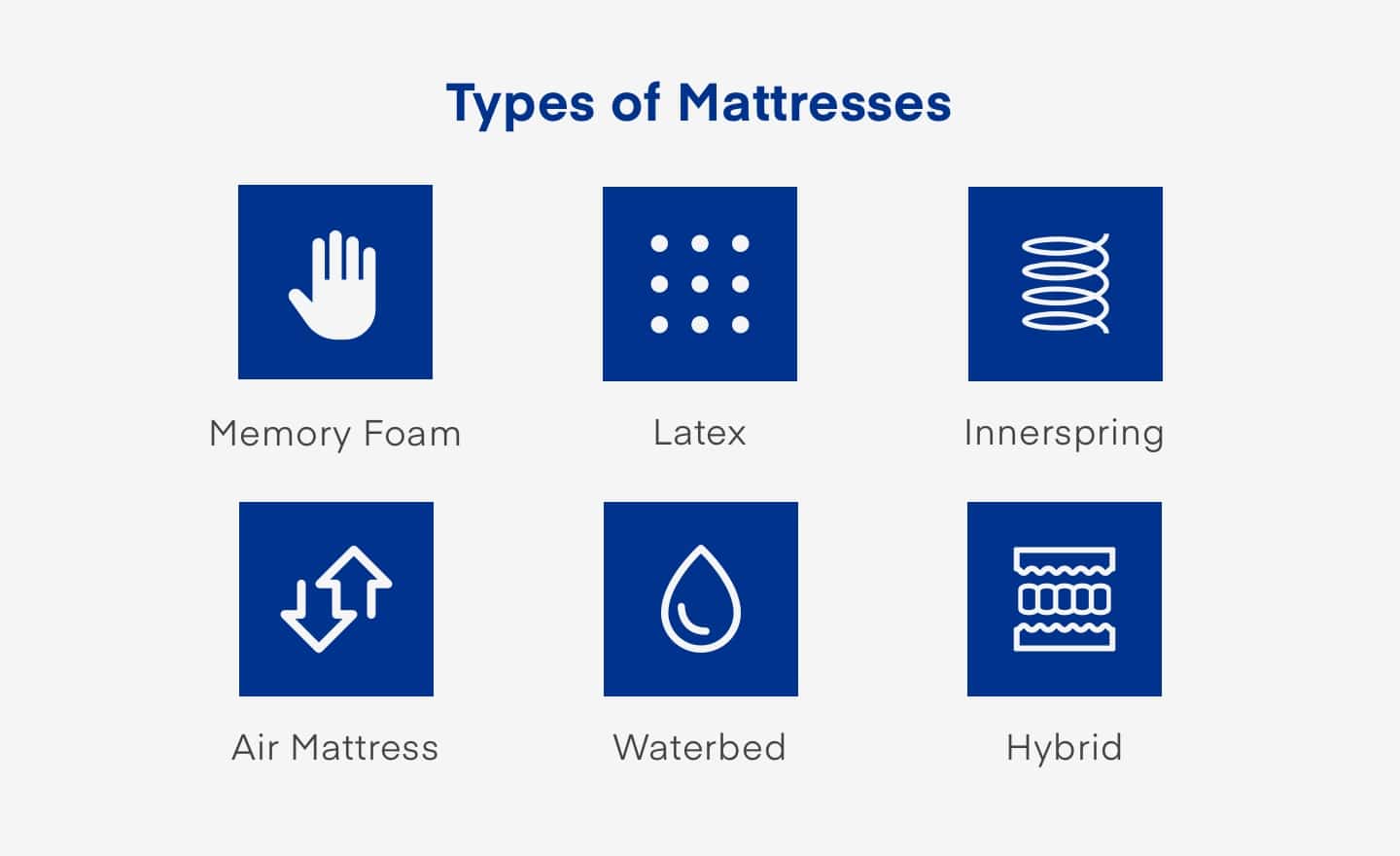
Mattress Types
Gone are the days when the only bed you could buy was an innerspring coil mattress. While innersprings are still a popular mattress type, other materials have since broken into the market to address consumer’s most pressing sleep concerns.
Polyurethane Foam
Also known as polyfoam, this material is similar to memory foam but a bit cheaper to produce. You’ve probably used it before without realizing it— it’s often found in couches, car seats, and mattress toppers. Some innerspring mattresses use polyfoam in their top comfort layer (the “pillow top”).
While polyfoam is affordable, it’s not always high-quality, so we recommend doing a lot of research if you plan on purchasing a polyfoam bed. Polyfoam is low-density, so it’s more prone to deteriorate faster over time.
Memory Foam (Viscoelastic Foam)
 Memory foam is by far the most popular foam option these days. That’s because it’s soft and contouring, leading to pressure-relief.
Memory foam is by far the most popular foam option these days. That’s because it’s soft and contouring, leading to pressure-relief.
Memory foam, like polyurethane foam, is usually used in the top comfort layers of a mattress to provide the user with all its pain-relieving benefits. Most memory foam mattresses feature a combination of high-density and low-density foams to offer both contouring comfort and durable support.
The responsiveness of memory foam keeps pressure from building up at your most sensitive areas, like the joints, back, spine, or hips. Those seeking pain relief often choose memory foam for this very reason. The responsiveness of memory foam keeps pressure from building up at your most sensitive areas, like the joints, back, spine, or hips.
A common complaint associated with memory foam is its unfortunate ability to trap heat. However, most memory foam manufacturers have begun to infuse their foams with gel, charcoal, copper, and other cooling materials to avoid heat build-up. Most memory foam uses open-cell technology as well, which allows for better airflow than typical closed-cell foam. Check out our memory foam mattress guide to learn the importance of measurements, such as density and ILD.
A common complaint associated with memory foam is its unfortunate ability to trap heat. However, most memory foam manufacturers have begun to infuse their foams with gel, charcoal, copper, and other cooling materials to avoid heat build-up. Most memory foam uses open-cell technology as well, which allows for better airflow than typical closed-cell foam.
Check out our memory foam mattress guide to learn the importance of measurements, such as density and ILD.
Convoluted Foam
Convoluted foam, also known as “egg-crate foam,” is not often found in the top layers of higher-quality mattresses since it’s quite stiff. However, it works well as a stabilizing layer to provide extra support and deter sag.
Latex Foam
 Latex foam is slowly gaining on memory foam as another soft, comfortable option for pain-sufferers seeking better sleep. Unlike memory foam, which is made using petroleum, natural latex is harvested from the sap of a rubber tree. This process requires little environmental impact, so latex is a good option for anyone seeking an eco-friendly mattress that uses natural materials.
Latex foam is slowly gaining on memory foam as another soft, comfortable option for pain-sufferers seeking better sleep. Unlike memory foam, which is made using petroleum, natural latex is harvested from the sap of a rubber tree. This process requires little environmental impact, so latex is a good option for anyone seeking an eco-friendly mattress that uses natural materials.
Latex, while similar in feel to memory foam, is a bit bouncier, so it appeals to anyone used to innerspring beds. Because of the way latex is made, the mattresses are also a more expensive mattress option than memory foam. Many consider the extra cost to be a worthy investment since latex foam typically lasts longer.
There are two types of latex on the mattress market: Dunlop and Talalay. Talalay is generally considered softer and more expensive, while you’ll often find Dunlop latex in the base layers of a latex mattress because it’s firmer.
Innerspring
 Innerspring mattresses have been around the longest— since the 1800s, to be precise! While they’ve come a long way since then, most still use steel or Bonnell coils in their base to give the user a nice, responsive surface.
Innerspring mattresses have been around the longest— since the 1800s, to be precise! While they’ve come a long way since then, most still use steel or Bonnell coils in their base to give the user a nice, responsive surface.
Because the inner layers of an innerspring mainly consist of coils, with foam or down being used only in the top comfort layers, innersprings are quite cool. That makes them ideal for hot sleepers.
Innerspring mattresses make up ⅓ of all mattress sales, but they are still consistently the lowest-rated as far as customer satisfaction. Innerspring beds start to sag after only 5 years, and if the comfort layer isn’t well-constructed, users may begin to feel the coils digging into their backs or sides.
If you want the bounce of an innerspring and the comfort of foam, opt for a hybrid— it’s a perfect mix of the two (literally 50% foam, 50% coils).
Hybrids
 By definition, a hybrid must have at least 3 inches of memory or latex foam in the mattress as well as an innerspring coil system, almost always in the base. Hybrids present the customer with all the benefits of foam and innerspring without their associated downsides.
By definition, a hybrid must have at least 3 inches of memory or latex foam in the mattress as well as an innerspring coil system, almost always in the base. Hybrids present the customer with all the benefits of foam and innerspring without their associated downsides.
The coils in hybrid mattresses are usually individually wrapped in fabric to reduce any motion transfer. Because of these coils, hybrids are still very bouncy, unlike memory foam. They also do not offer quite as much pressure relief as all-foam beds do, but because of the inclusion of pocketed coils, they still have a nice, balanced feel.
Airbed
 Airbeds, or air mattresses as they are more commonly known, are mainly popular due to convenience, not comfort. They make great beds for camping or travel because they decompress and fold easily. Most of them can be easily set up if they include a pump.
Airbeds, or air mattresses as they are more commonly known, are mainly popular due to convenience, not comfort. They make great beds for camping or travel because they decompress and fold easily. Most of them can be easily set up if they include a pump.
We don’t recommend using an airbed on a typical bed frame or foundation since they are prone to popping or easily developing holes. These bed types work best on a flat surface, like the ground.
Waterbed
 Waterbeds were a novelty in the 80s and 90s, but now, most people are looking for function and comfort over novelty. Regardless, waterbeds are still around and some customers prefer them because of their unique characteristics.
Waterbeds were a novelty in the 80s and 90s, but now, most people are looking for function and comfort over novelty. Regardless, waterbeds are still around and some customers prefer them because of their unique characteristics.
Because waterbeds are filled with water, they can be quite comfortable and conforming. They also offer little to no resistance, so they are soft, but not supportive.
Some like the feel of waterbeds because the gentle waves that develop as you lay on them can lull you off to dreamland. Waterbeds are also hypoallergenic, so there’s no worry about dust mites, allergens, or bed bugs infiltrating your bed.
However, waterbeds, like airbeds, are prone to puncturing and holes, causing leaks. They can also develop strange odors over time because moisture can lead to bacteria build-up.
Futon
Futons are the hallmark of all college dorms, but are they really that great? Well, no. They are cheap, convenient, and easy to set up, but they offer little in the way of comfort or support.
However, if you are in college and still have a rather spry back, you might be really comfortable on a futon. Those with chronic pain issues or poor posture should look elsewhere for a more supportive, softer bed.
Couch Beds
Couch beds or rollaway beds are often found in hotel rooms or small apartments. They’re a convenient way to save space since you can easily put the bed away when you’re not using it.
Despite their convenience, couch beds are not usually known for their comfort. They are usually made using innerspring mattresses that easily fold up, and in order to do that, the mattress must be a little thin. Thin mattresses don’t offer much in the way of support, so if a regular innerspring mattress fits into your lifestyle and budget, go for that instead.
Things to Consider Before Buying
Now that you know all the different mattress types, you’re ready to buy, right? Well, not quite. Think of mattress shopping as a kind of self-awareness exercise— you have to know yourself in order to find the right bed.
Mattress shopping would be easier if we had no health concerns, always slept alone, and money wasn’t an object. But the truth is, at least one of those things affects all of us at some point, and so you’ll need to consider a few things before you buy a bed.
Best Mattress for Specific Needs
Mattress shopping would be easier if we had all had the same body type, had no health concerns, always slept alone, and money wasn’t an object. But the truth is, at least one of those things affects all of us at some point, and so you’ll need to consider a few things before you buy a bed.
Athletes
If you’re an athlete or you just exercise a lot, your mattress can make or break your recovery. You’ll want a mattress that releases tension at your pressure points instead of making it build up. That means a mattress with a supportive core is crucial.
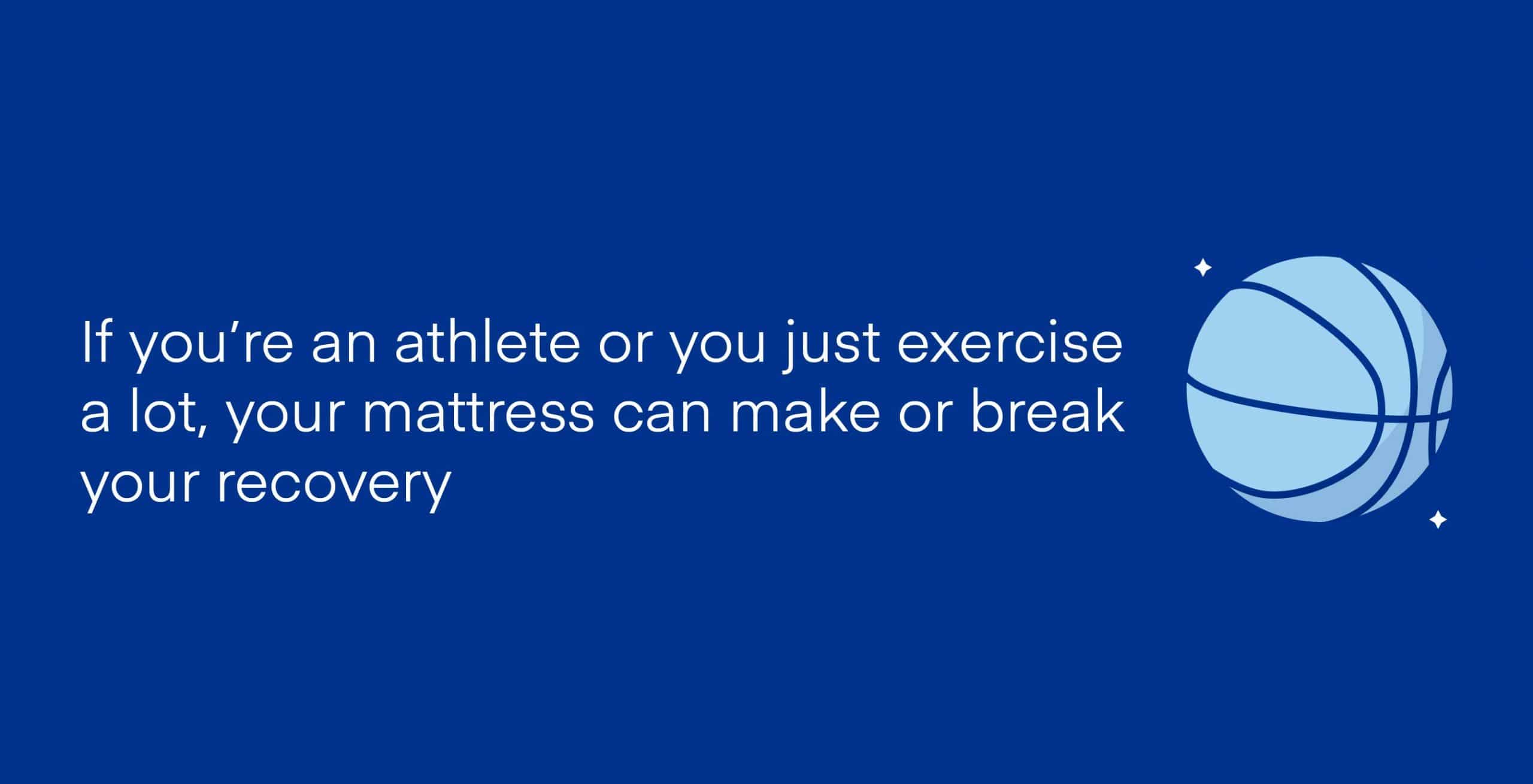
Memory foam beds are a good choice for athletes because they cradle pressure points nicely and a lot of them are infused with gel or graphite— sleeping hot is the last thing you’ll want when your muscles are trying to recover. Athletes may also find relief on a hybrid, since these offer lots of support, cushioning, and airflow.
Quick Summary: Athletes may also find relief on a hybrid, since these offer lots of support, cushioning, and airflow.
Couples
Sharing a bed with someone can be difficult, especially when you each have different sleep styles and preferences. Some companies have tried to address this by creating dual-sided or “flippable” mattresses with one firm side and one soft side. However, you can only sleep on one side of a mattress at a time, so if one of you likes it firm and the other soft, what are you supposed to do?
All good relationships involve compromise, and choosing a mattress to share is no exception. The best “middle ground” mattress is one with medium softness. To quantify this, you can think of firmness on a scale from 1-10, with one being extremely soft and 10 being super hard. A medium mattress usually falls between 6-7.
Most online mattress companies have at least one mattress marketed as “universally comfortable for all sleep styles.” These beds are usually a medium in firmness, but the feel can vary across mattress brands. Furthermore, a medium all-foam bed and a medium hybrid bed won’t feel exactly the same. Read customer reviews, especially those of people who sleep with a partner, so get an idea of how “universally comfortable” the bed really is.
Quick Summary: The best “middle ground” mattress is one with medium softness. To quantify this, you can think of firmness on a scale from 1-10, with one being extremely soft and 10 being super hard. A medium mattress usually falls between 6-7.
Overweight
In the context of mattress shopping, an overweight person is usually classified as more than 230 pounds. If you fall into this category, you will need a thick mattress (at least 12 inches) and one with an impressive support system.
On top of that, heavier sleepers may need a mattress that falls more on the “firm” side of the firmness scale since the mattress needs to support more weight. Choosing a mattress that’s too soft or thin could mean faster deterioration, and nobody wants that.
Additionally, heavier sleepers may need a bed with superior edge support— meaning they will never feel like they are rolling or falling off the bed. Innersprings and hybrids typically have better edge support than foam or latex.
Hybrids and innersprings are popular among heavier sleepers because they are responsive, supportive, and less prone to sinking like memory foam. However, if you prefer the feel of memory foam over the other types, just make sure to choose one that’s a least 12 inches thick and uses high-density foam in the base.
Quick Summary: Heavier sleepers may need a bed with superior edge support—meaning they will never feel like they are rolling or falling off the bed. Innersprings and hybrids typically have better edge support than foam or latex. If you prefer the feel of memory foam, make sure to choose one that’s a least 12 inches thick and uses high-density foam in the base.
Best Mattress for Health Problems
Our health is the fuel that keeps our lives going— when it’s drained, everything else suffers. So many of us have conditions that disrupt our sleep. Sometimes your mattress can be the missing piece to get you the rest you need.
Back Pain
According to the National Institute of Neurological Disorders and Stroke, Verified Source National Library of Medicine (NIH) World’s largest medical library, making biomedical data and information more accessible. View source about 80% of adults experience back pain at some point in their lives. Many of those cases also report their back pain affects their sleep quality. Like we stated at the very beginning of this article, if your mattress is causing you significant pain, it’s time to replace it.
Back pain sufferers need a mattress that keeps their spine in neutral alignment– that means it shouldn’t be sinking down too far or arching upwards. Your sleeping position will affect your posture as well, and we’ll get to that later. For now, remember that no matter your sleep position, your mattress needs to support your back and cushion your pressure points.
If you suffer from back pain or any other chronic pain, a foam or hybrid mattress is probably your best bet since they offer a perfect blend of softness and support. The best firmness for you will depend on your sleeping position. If back pain is becoming a significant problem for you, make sure to see a healthcare professional.
You can also look into adjustable bed frames, since these allow you to really customize your sleeping position, among other things.
Herniated Discs
While back pain is the most common chronic pain disorder in the United States, other common degenerative diseases can affect sleep quality, too. Sleeping on a bad mattress will only make these conditions worse and lead to more severe injury and pain.
Herniated discs are one of the most common health issues stemming from untreated back pain. They occur most often with progressing age or other back injuries, and the pain usually manifests in the lower back (lumbar spine) or neck (cervical spine).
The bones in the spine are cushioned by discs, and when these become ruptured or torn, they begin to degenerate, causing pain and even pressing on the nerves, leading to inflammation. Those with herniated discs should look into a mattress with excellent pressure point relief, since they already have pressure building up in their back without even laying down! Additionally, seeking out a mattress with additional lumbar support built into it can help ease the pain.
Arthritis
Arthritis currently affects more than 50 million adults and 300,000 children— in fact, it’s the leading cause of disability in the United States. Most people group “joint pain” into the arthritis category, but there are actually more than 100 different types. This inflammation and swelling in the joints occurs more frequently as we age.
Arthritis pain is manageable with medication, regular exercise, and better sleep, but if left untreated, it can cause damage to the heart, eyes, lungs, and kidneys.
While sleeping on a comfortable mattress won’t cure anyone of their arthritis woes, it can certainly help sufferers wake up with less pain. Remember: your mattress should never cause additional pain; if it does, that means it’s unsupportive and probably time to replace.
Arthritis-sufferers should look out for a mattress with layers of pressure-relieving material, either in the form of memory foam or latex. They may like hybrids for the supportive coils at the bottom, or all-foam beds with sturdy support cores.
Bad Posture
Most of us have probably heard our moms say “Sit up straight!” at least once in our lives. With so many of us in school or working at desk jobs, it’s easy to get into a bad habit of poor posture. While this can be easily corrected with practice, ignoring it can lead to larger health issues down the road.
Additionally, if your mattress is exacerbating your poor posture, you’re at an increased risk for back pain. Choose a mattress with sustained support in the core, like hybrids with their pocketed coils, or foam mattresses.
Allergies
Allergies, whether seasonal or chronic, can make sleeping miserable. Thankfully, a lot of mattresses today are naturally hypoallergenic. If you want to take it a step further, look for mattresses with CertiPUR-US® or Greenguard Gold Certifications. These labels mean the mattress was manufactured without harmful chemicals, so you can sleep knowing your mattress is free from potential irritants.
Memory foam and latex foam are excellent hypoallergenic choices for anyone dealing with allergies. Additionally, using a good mattress protector or encasement will further protect your mattress from allergens, dust mites, and bed bugs.
Sleeping Hot
Most of us conjure up cozy images of snuggling up in our warm beds when we picture going to sleep, but in reality, the best temperature for restful REM is actually between 60-67 degrees Fahrenheit.
Your mattress can help or hurt you in this regard. Foam mattresses get a lot of flack for trapping heat, but as long as you choose one with open-cell technology and/or cooling materials infused into the foam, you shouldn’t have this issue. Hybrids and innersprings are other good options for hot sleepers since the coils in the core allow for natural airflow.
Look for descriptive words like “breathability,” “cooling,” and “open-cell.”
Best Mattress for Sleep Disorders
A Gallup poll done in 2013 found that the average American was only sleeping 6.8 hours a night, and 40% were getting even less than that. About 100 years ago, most people got an average of 9 hours every night. We could point the finger at the Internet, our jobs, even electricity for this rapid decrease in sleep, but that won’t solve the problem.
Taking a good hard look at your sleeping arrangements is a good place to start.
Insomnia
Insomnia is the most common sleep disorder. It can be chronic and affect patients over their entire lives, or it can be instigated by a recent trauma, job loss, anxiety, and more. No matter the type, insomnia obviously affects sleep for the worse, and a good mattress can help.
Look for a bed that offers consistent, even support so you won’t find yourself rolling around on the bed all night. You’ll also want one that isn’t noisy, conforms closely to your body, and offers soft cushioning so you don’t wake up in pain (which can increase your anxiety and insomnia).
A latex or memory foam mattress is one of the best options for the sleep-deprived. It will cradle you gently to sleep and ensure you wake up pain-free.
Snoring and Sleep Apnea
Snoring and sleep apnea are often grouped together because they both cause irregular and disruptive sleep due to obstructed airways. Snoring is the less severe of the two; most of us snore at least a few times in our lives.
Snoring is caused by nasal problems or congestion (such as a common cold), sleeping position, and even mouth anatomy. Those with a soft, thick palate are more prone to it dropping down and blocking their air passages, causing the vibrating noise associated with snoring. Sleeping on the back is most likely to cause snoring, so if your snoring interrupts your sleep often, consider switching to a side-sleeping position instead.
Sleep apnea Verified Source Mayo Clinic Ranked #1 hospital by U.S. News & World Report and one of the most trusted medical institutions in the world. The staff is committed to integrated patient care, education, and research. View source occurs when breathing stops and starts in the middle of the night. There are three basic causes of sleep apnea that all lead to airway obstruction. As you can imagine, if you stop breathing often in the middle of the night, this will begin to affect your body in more serious ways.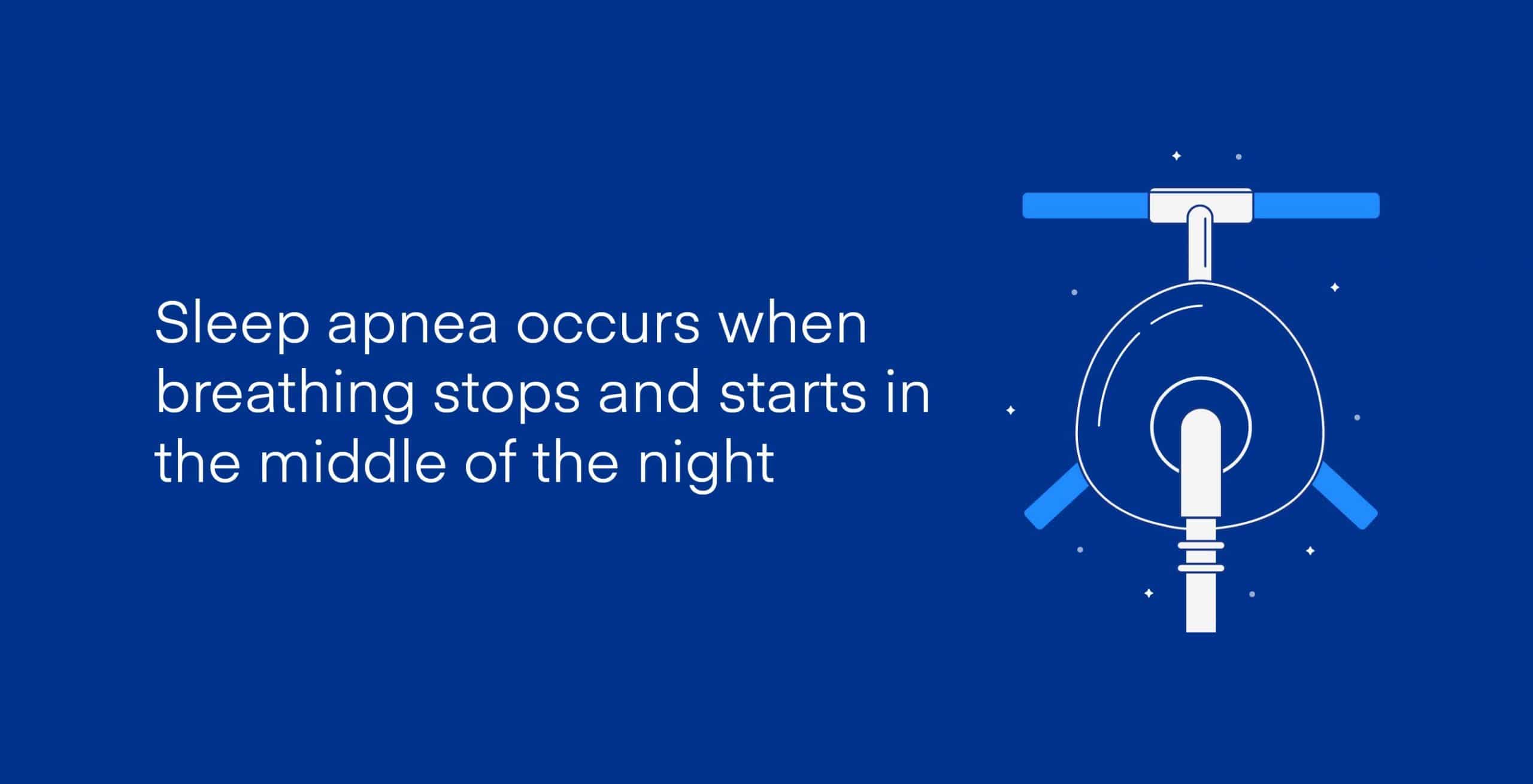
Obstructive sleep apnea happens when the muscles in the back of the throat relax. When these muscles relax, they obstruct the airway almost completely— sufferers of obstructive sleep apnea often wake up choking in the middle of the night.
Central sleep apnea is caused by the brain “forgetting” to breathe; this happens when the muscles that control your airways relax. If this happens while you’re asleep, your brain notices the drop in oxygen and wakes you up to breathe or adjust your position (most people don’t remember waking up to do this).
Complex sleep apnea syndrome: essentially, complex sleep apnea syndrome is a combination of central and obstructive sleep apnea in the same patient.
Sleep apnea requires medical treatment, and a mattress will not cure it. However, supportive mattresses and pillows can help alleviate the symptoms. Additionally, adopting a new sleeping position (we recommend the side) can decrease your likelihood of snoring or having breathing issues while you sleep.
Snorers and sleep apnea patients may enjoy an adjustable bed, since this allows them to elevate their head slightly and minimize the risk of obstructed airways. Additionally, their pillows should be medium to high-loft (thickness) to open up the airways. The wedge pillows and memory foam pillows often work best for those with sleep apnea.
Restless Leg Syndrome
Restless Leg Syndrome is exactly what it sounds like, and it affects 10% of American adults. If you’re dealing with this condition, you know how difficult it can be to fall asleep when you’re constantly fighting the urge to move your legs.
While a mattress certainly won’t cure your RLS, a good-quality one can help alleviate the symptoms and allow you to sleep more soundly. Look for a mattress that allows you to change positions easily without feeling stuck– this means a mattress with little to no motion transfer is best. Hybrids, memory foam, and latex foam mattresses are all great options.
You might also consider an adjustable base to help ease the pain and discomfort in your legs.
Consider your Sleeping Position
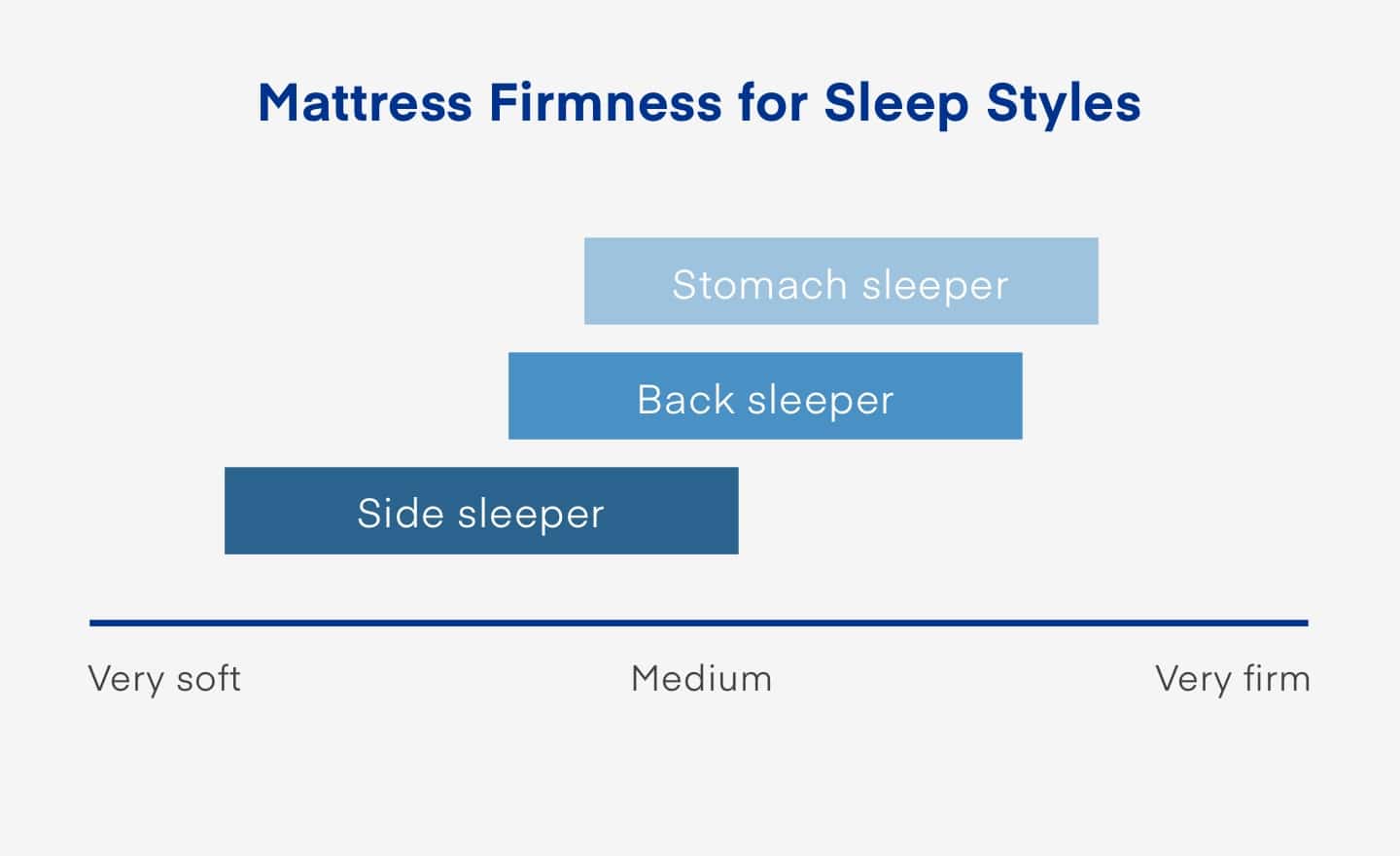
Yes, how you sleep has a tremendous influence on how well you sleep. Maybe you don’t think about it much, but the position you’re in for most of the night needs to be compatible with your mattress.
For example, stomach sleepers will probably be wildly uncomfortable on a super-plush mattress because they will constantly need to readjust so they don’t sink down. Their spines and backs will be all out of whack, causing pain. Let’s go over the best mattresses for the four most common sleeping positions.
Side Sleepers
Side sleeping is the most popular choice for most of us, and it’s also the healthiest! Side sleeping keeps the posture neutral, decreases the risk of snoring, and improves circulation. It’s also the healthiest position for pregnant women.
Side sleepers should choose a mattress that cushions their shoulders, hips, and other pressure points, while also keeping their spine straight. A medium or medium-firm mattress should do the trick.
As for mattress type, side sleepers can find comfort on memory foam, latex foam, or hybrid mattresses, as these all offer generous support and softness. An innerspring may not be soft or supportive enough for side-sleepers, so if you’re looking for bounce, opt for a hybrid or latex.
Back Sleepers
Back sleepers have one advantage over side-sleepers— they are probably in the best position for good posture. It’s also the position in which you’re less likely to develop wrinkles since your face isn’t pressed up against the pillow all night.
Back sleepers are more prone to snoring than others, so choosing a mattress with an even surface and hefty support is key. A medium or medium-firm mattress should feel comfortable to most back-sleepers. Hybrids, foam, and latex foam are all excellent choices for back sleepers.
Stomach Sleepers
Stomach sleeping is not recommended because of the strain it puts on your back and neck. However, if you are finding this habit hard to break, choose a mattress that’s responsive enough to keep the spine aligned. It should also be medium-firm to firm. Stomach sleepers may be comfortable on innersprings or hybrids since these offer more even support and less sink than latex or foam. However, they could also choose medium-firm or firm latex or foam mattresses.
Combination Sleepers
Combo sleepers choose lots of different sleep positions all night, so it can be hard to determine which is the “dominant one.” If you sleep this way and don’t know which mattress to buy, you can either go for a medium model, which suits most sleeping positions. In fact, the AS3 is our most popular and best-selling mattress because so many people toggle between different sleeping positions throughout the night. Plus, Sleep.org rates it as the “most comfortable” mattress they’ve reviewed.
Budget and Pricing
The best mattress brands aren’t free, no matter how tempting that neighborhood yard sale might be. Mattresses that cost $300 or less will probably break down not too long after you buy them. Additionally, overpriced mattresses with all the bells and whistles might be overcompensating for the fact that they aren’t all that comfortable.
Before you spend money on a mattress, consider how much you’re willing to maintain it, how you plan on using it (for example, in your bedroom vs. the guest bedroom), and what you expect it to do for you. If you just need a simple cushion to sleep on every night, finding a mattress within your desired price range probably won’t be hard.
On the other hand, if you share your bed with someone who has opposing sleep preferences, or if you deal with sleep disorders or health conditions, it might take a little more work and money to get the right mattress.
The following is a breakdown of the average cost for the most common mattress types (all prices are for queen-size mattresses):
| Mattress Type | Average Price |
|---|---|
| Innerspring | $950 |
| Memory Foam | $900 |
| Latex | $2000 |
| Hybrid | $1650 |
| Airbed | $2250 |
Things that affect mattress prices can vary, but usually, the following factors should alert you to how spendy (or cheap) the bed will be: mattress materials, the company’s return policy and warranty, brand longevity and reputation, and of course, the mattress lifespan.
More expensive:
- Specialty foams, like gel memory foam or copper-infused foam, will sometimes make the bed pricier.
- Latex foam is usually more expensive by virtue of the fact that it’s more durable than other types.
- Pillow tops, found on innerspring or hybrid mattresses, can increase the value of a mattress, especially if they use proprietary foams.
- Beds addressing specific concerns, like mattresses for back pain. Sometimes these mattresses come with extra supports built into the mattress. More materials usually increase the cost.
- Beds with a generous warranty or free white glove delivery. The standard warranty length in the mattress industry is 10 years. If they offer more than 10 years, that can boost the price. Additionally, companies may offer white glove delivery, meaning someone will deliver, unpack, and set up your mattress and remove your old one. Even if the white glove delivery is “included” with your mattress purchase, it is also factored into the mattress cost.
Less expensive:
- Thin mattresses (less than 10” thick) not only require much less material to make, but they are also much less comfortable. They will also break down quickly, so you get what you pay for.
- Mattresses with no warranty or return policy. Beware: if a mattress doesn’t have a warranty, that essentially means the company is unwilling to back their own product. Doesn’t instill much confidence, does it? Obviously, a mattress with no warranty or return policy will be cheaper, but it could cost you a lot more if you decide you don’t want it anymore and can’t get your money back for it. Then you’ll be stuck with no mattress, and you’ll be out the money you paid for it.
How much you are willing to spend depends entirely on your sleep needs and preferences. If you don’t need cooling gel foam or lumbar supports built into your mattress, feel free to pass on those mattresses and go for a more basic model.
Remember: basic doesn’t necessarily mean “ uncomfortable.” You can still find good quality beds for around $500. Just make sure to always read customer reviews!
When you’ve found the right bed for you, you can now focus on getting the best deal. Most established companies offer transparent and fair pricing, but sales weekends, such as the annual Black Friday Mattress sale held in-store and online.
Sleep Trials, Return Policies and Warranties
Customers have come to expect warranties with most of the things they buy. Warranties give us peace of mind when we’re dropping a large amount of money on something, and a mattress warranty is no different. Warranties vary depending on the company, but most cover the same few things:
- Sagging below a certain point (usually at least 1 inch)
- Bunching or rips beyond normal use
- Defects in the cover zipper or mattress material
- Burst or sagging coils
A 10-year warranty is the industry standard for mattresses. If a company offers more years than that, they will usually prorate the warranty, meaning the customer must pay a percentage of the mattress cost to get it repaired after the first 10 years. Lifetime warranties may seem amazing, but because a good-quality mattress usually won’t last beyond 15 years maximum, lifetime warranties are more of a marketing tactic than a good deal.
Sleep trials were born out of necessity from the bed-in-a-box revolution. Since customers were no longer trying out a mattress in a mattress store but instead using it in their own homes, companies needed to provide some way for customers to return the bed if they found it incompatible during that sleep trial.
The best mattress in a box brands usually offers at least a 90-day trial period. Some even offer up to a year! It takes about 21-30 days to adjust to a new bed, so if a company’s sleep trial is less than that, move on to something else.
Return policies for online companies usually coincide with their sleep trial. If you’re not satisfied with your mattress within the sleep trial period, the company will issue a full refund. Sometimes they require you to retain a donation receipt in order to get your refund. Your best bet is to keep a record of all communication to take full advantage of the return policy.
Age
Age is just a number, but that number can affect the type of mattress you buy. Obviously, beds for babies will be completely useless for adults. Let’s go over the best mattress types for different age ranges.
Babies
Infants need to sleep on small, even surfaces with very little sinkage. A mattress with too much plush can put the baby at a higher risk for SIDS, or Sudden Infant Death Syndrome.
Currently, baby loungers are trendy because they allow the baby to sleep almost anywhere. They’re portable and don’t allow for the baby to roll around very much while they’re using it. However, it is not recommended that babies regularly sleep in loungers or use them as a normal bed. There is still a risk that the baby can turn over in a lounger and suffocate.
If your baby is sleeping in a cot or crib, choose a mattress that fits exactly. The standard crib-size mattress is 28 inches wide and 52 inches long. The mattress should be firm, and most are made with foam or coils. You can also choose from mattresses made with organic materials if that’s a concern for you.
Toddlers and Kids
Once your baby is older and ready to graduate to a bigger bed, you can choose from twin size, twin XL, or a full bed, which allows for lots of growth as they get older. Kids are pretty resilient, so they can usually be comfortable on foam, innerspring, hybrid, or latex beds.
Teenagers
Teenagers experience growth spurts, so some parents like to invest in a bigger bed to start with just to prepare for the extra room their kids might need. For teenagers, a twin, twin XL, full, or even a queen-size bed can work. If your teenager is quite active, a foam, hybrid, or latex mattress would probably be the most comfortable option.
Seniors
Seniors don’t need to worry too much about the size of their mattress, as they probably know their preferences in that regard. If, however, you’re getting on the older side and find you need more support and comfort, memory foam or hybrid might be a good fit. Seniors may also find an adjustable bed is a great way to customize their comfort and let them sleep more soundly.
Sizing
What if you live in a tiny apartment? What if you like to move around a lot while you sleep, and don’t want to worry about falling off the bed? What if you sleep with a partner and need lots of extra sleeping space? The answer to these questions is the same: choose the right size bed!
| Mattress Size | Dimensions (IN) | Dimensions (CM) |
|---|---|---|
| California King | 72 inches by 84 inches | 183 cm by 213.5 cm |
| King | 76 inches by 80 inches | 193 cm by 203.5 cm |
| Olympic Queen | 66 inches by 80 inches | 167.5 cm by 203.5 cm |
| Queen | 60 inches by 80 inches | 152.5 cm by 203.5 cm |
| Full XL | 54 inches by 80 inches | 137 cm by 203.5 cm |
| Full | 54 inches by 75 inches | 134.5 cm by 190.5 cm |
| Twin XL | 38 inches by 80 inches | 96.5 cm by 203.5 cm |
| Twin | 38 inches by 75 inches | 96.5 cm by 190.5 cm |
| Small Single | 38 inches by 75 inches | 76.2 cm by 190.5 cm |
| Crib | 27.25 inches by 51 inches | 69.2 cm by 129.5 cm |
A note about California Kings: often these size mattresses are used for adjustable beds or split beds. They are not as wide as king-size mattresses, but they are four inches longer.
Composition
The most important parts of your mattress are invisible to you, but you shouldn’t disregard them. All the layers of your mattress may seem simple on their own, but when they come together, they either give you the best sleep of your life or no sleep at all!
The layers will be different depending on the mattress type you choose and the brand that makes it. Most companies will break down each layer on their website using an infographic. If you can’t readily find out what makes up all the layers of a mattress you’re considering, look elsewhere.
While recognizing that mattress composition varies across brands, we’ll go over the basic layers of each type.
Innerspring

Foundation: This layer sustains the coil support layer and is often made of wool.
Support core: This is where the coils and springs are! Coil type and number varies depending on the mattress and brand, but a supportive innerspring should at least use steel coils in their base.
Comfort layer: This is the pillow top, usually made using memory foam, poly-foam, plush cotton, or other soft fibers.
Foam

This mattress type has the most variation, with every brand claiming to do something different with their manufacturing processes, layer thickness, and so on.
The most basic foam mattress will only have two layers— a high-density foam as the support core and a softer support foam as the comfort layer. Of course, many brands have added more layers to address specific concerns, such as a cooling gel-foam layer, a transition foam layer (typically for more pressure-point relief and support), or convoluted foam for added contouring.
Support core: Usually made using high-density poly-foam.
Additional layers* (thickness, material type, and order vary): gel foam, transition foam, latex foam, and so on.
Comfort layer: Made using memory foam, gel-infused foam, or any soft, responsive foam.
*these layers are not always present
Hybrids

A hybrid must have at least three inches of foam along with a coil support core to qualify as a “hybrid.” Most hybrids use at least 1.5 inches of foam in the top layer and then more layers of foam throughout. Like memory foam, the construction of this mattress type varies, but they all usually have a few things in common.
Hybrids use pocketed coils, also known as Marshall coils, in their base. These are more supportive than traditional coils and give hybrids their bouncy feel without causing motion transfer.
Foundation: Usually made with thick, durable coils like Bonnell coils.
Support core: This layer acts as a buffer between the foundation and additional layers. It usually consists of pocketed, or wrapped coils for better motion isolation.
Additional layers (thickness, material type, and order vary): Latex foam, gel foam, transition foam, memory foam, or microcoils.
Comfort layer: Often made using memory foam, more microcoils, poly-foam, or cotton fill.
Additional Criteria
Lest you think you know everything there is to know about mattresses now, think again! There are still a few other things to consider before you make your purchase. After all, this is a pretty big investment— not just of money, but of time and energy. The mattress you choose can influence your health for better or worse, so the extra time you put into research makes all the difference.
Ratings and Reviews
How can you trust all the mattress reviews out there? In the age of online mattresses, companies have begun to dispatch certain practices to make their mattresses appear in your search much easier. While this makes shopping more convenient and fast, it can also make it harder to distinguish bias.
Thoroughly read as many customer reviews as you can– furthermore, if a brand sells in other places beyond their website, such as Amazon, read reviews there. Make sure to read lower-star reviews too so you can gauge the most common complaints. Sometimes customers leave lower ratings because of customer service, shipping, or things unrelated to the mattress. Knowing your priorities before you shop can help you avoid any issues you might run into when you buy.
Some companies allow you to filter reviews by “type,” meaning if a customer mentions back pain, sleeping hot, or sleeping with a partner, you can read about their specific experiences and how they relate to yours.
If you cannot easily find lower customer ratings on a company’s website, that’s cause for concern. Companies should welcome customer feedback in order to improve their product, and if you notice a complete lack of criticism, that can be a red flag.
Value
Value is not the same thing as price. It has more to do with brand reputation, mattress durability, and customer reviews. Overall, a mattress’s value will depend on you and your specific needs.
Generally, a bed with great value will come with a generous warranty (at least 10 years, since that’s the industry standard), return policy, and even a sleep trial. If the bed is on the expensive side, read up on all the materials used to make it.
Remember, hybrid and latex beds tend to run on the spendier side, and models with special features such as additional back support cores, breathable foams, or wrapped coils can cost more, too.
Material quality
How can you tell if your mattress is really “high quality”? Reading reviews from customers who bought their mattress at least three months ago will give you a better idea of how long the mattress holds up.
Perhaps you want a mattress made using green materials such as organic cotton, wool, or plant-based foams. Just because a material is organic doesn’t mean it will hold up longer— typically people choose “green” mattresses for other reasons.
Company Reputation and Transparency
In general, companies should disclose where their mattresses are made, how they manufacture the materials, and any other pertinent information the customer needs to know, like warranty, return policy, and sleep trial policies.
If a company claims to make their mattresses in the USA, make sure this is actually the case by doing some digging. Additionally, if they claim to have certifications, like CertiPUR-US®, the certification should be accompanied by the registered trademark symbol (®).
You can look at the company’s profile on the Better Business Bureau for more info about their company practices, but this is not always the most reliable or updated place to get information. Read the company’s “about” page on their website or their FAQs. If reading through those doesn’t answer all your questions, engage a customer service representative via chat or email.
Firmness and ILD Ratings
We’ve talked a little bit about mattress firmness so far, and it’s a key part of the mattress comfort level. Your sleeping position will greatly influence which firmness you prefer, but it also helps to understand the most common firmness levels in mattresses and what they can mean for overall support.
Companies measure the firmness of latex and memory foam by testing the ILD, or Indentation Load Deflection. This measurement tells them how much weight the mattress can take on before it is indented to 25% of its thickness. Therefore, the higher the ILD, the firmer the mattress.
A customer service rep may be able to answer your questions about the ILD rating of a mattress, but most brands will simplify this by using a “firmness scale” from 1-10, with 1 being incredibly soft and 10 being very firm. The ILD rating is not often advertised on the website simply because the firmness scale is easier to understand.
| Firmness Level Rating | Feel | Description |
|---|---|---|
| 1 | Very soft or plush | Sinks deeply and easily |
| 2 and 3 | Soft | Surface sinks and conforms significantly |
| 4 | Medium-soft | Surface sinks somewhat and conforms closely |
| 5 | Medium | Surface doesn’t sink too much but still conforms |
| 6 | Medium-firm | Surface doesn’t sink too much but conforms a little |
| 7 and 8 | Firm | Surface does not sink hardly at all, minimal conforming ability |
| 9 and 10 | Ultra-firm | No sinking or conforming |
What About Mattress Foundations?
Now that you’ve done all the research on the mattress, you’ll need a solid place to put it. Most companies should and do specify the best type of foundation to use their mattresses on. They do this because using your mattress on an incompatible base can void your warranty.
The best type of foundation will depend on the mattress type. Typically, innerspring mattresses need a box spring in addition to the actual bed foundation. Foam, latex, and some hybrids don’t need box springs, but they need supportive bases without lots of gaps, which can cause sinking or damage to the mattress.
If you’re looking for further customization, check out an adjustable bed frame. These allow you to lift your feet or head to a healthy posture, and some adjustable frames come with nightlights, USB ports, or snore buttons. Adjustable beds work best with foam or latex mattresses since these are more pliable. The firmer the mattress, the thinner it should be in order to work with an adjustable bed.
Worst Mattress Types
Just like the word “best” is subjective, the “worst” bed is not easily defined. What works wonderfully for one person might be terrible for the next. With that said, there are some bed types that may not work for anyone due to their construction and other features (or lack thereof).
| Mattress Type | Notes |
|---|---|
| Promo Beds | Promo beds are usually offered as part of a sale at mattress stores, like “buy one mattress, get one free.” While these seem like a great deal at the time, the promo bed is often not good quality and will deteriorate quickly. |
| Thin Mattresses | A great mattress should be at least 10 inches tall to give the user adequate support and durability. If you are heavier-set, you will need a mattress that is at least 12 inches or taller. |
| Beds with No Warranty, Return Policy, or Sleep Trial | Obviously, you need a safety net in case your mattress doesn’t end up working for you. If the company doesn’t offer any sort of return policy, warranty, or sleep trial, it might be time to look elsewhere. Ideally, if you bought the bed online, it should come with a sleep trial. |
| Overpriced Beds | Most good quality mattresses cost $1000-$1500 on average (for a queen-size). If you are paying more than that and the bed isn’t a hybrid or doesn’t come with special features, it’s probably not worth the extra cost. Beware of “luxury mattresses” that seem to have all the bells and whistles but the reviews speak otherwise. |
Take the Pain Out of Mattress Shopping
We all need a supportive place to sleep at the end of the day. While mattress-shopping can seem like a headache, we hope after reading this guide you feel more confident about the process and ready to find the perfect bed for all your needs. The most comfortable mattresses will conform comfortably to your sleeping position and offer ample posture support, giving you a good night’s sleep.
Consider an Amerisleep Mattress
Amerisleep has been in the mattress business since 2007. Since then, we’ve established ourselves as a trustworthy brand that creates high-quality, long-lasting mattresses. We use partially plant-based foams and proprietary foams in various firmnesses to accommodate all sleeping styles. Amerisleep invests in high-quality materials to bring you the best sleep possible.
While the layer thickness and order varies for each of our mattress options, every one contains Bio-Pur® and Bio-Core®, Amerisleep’s unique foams that are built to last. The Bio-Pur® layer at the top of every mattress has an advanced open cell structure, promoting airflow without sagging or dipping beneath the user. The Bio-Core® acts as the supportive base layer for every mattress; produced in our eco-friendly manufacturing facilities, the Bio-Core® supports all the layers above it and deters sag for years to come. Each Amerisleep bed ships free to your door with a 100-night sleep trial, wherein you can try out the mattress in your own home.
If you decide to return your bed after 30 nights, Amerisleep will issue a full refund. All beds are covered by a 20-year prorated warranty.
What Makes Amerisleep Different
Amerisleep might seem like just another bed-in-a-box online mattress retailer, but our unique foams and layer construction sets us apart. We offer five different firmness options to accommodate every sleep style; many foam bed companies only make one or two models.
Amerisleep relies on partially plant-based foam to create the top comfort layer— the centerpiece of every mattress. In addition to using plant-based foams, we also use zoned support technologies and durable support foams to deliver your best night’s sleep yet.
Breathable Cover
The cover on all Amerisleep beds is a soft, stretchy fabric to promote airflow and prevent hot nights. This cover is soft-to-the-touch and even machine washable for easy cleaning.
Bio-Pur® Foam
The Bio-Pur® layer, or top comfort layer of every Amerisleep mattress, is partially plant-based. Most memory foam is made using petroleum, a crude oil. However, because we replace a good amount of petroleum with eco-friendly castor oil during the manufacturing process, we limit the off-gassing smell and other potential toxicity concerns associated with memory foam.
Bio-Pur®, like all memory foam, is open-cell, but its construction is a bit more advanced thanks to the additional space between particles of foam. This essentially creates air channels in the foam for superior responsiveness. As a result, Bio-Pur® is more responsive and breathable than traditional memory foam.
Affinity Layer with HIVE® Technology
The Affinity Layer with HIVE® is in every mattress except the AS1. HIVE® stands for Harnessing Intelligent Ventilation and Energy, which describes exactly what this layer does. Hexagonal-shaped cutouts in the foam are closely clustered together where you need more support— at your head, shoulders, back, hips, and feet. When you compress these cutouts, they don’t sink, hence relieving pressure.
This layer is made with Surface Modification Technology, with automatically adjusts to your sleeping position as you shift during the night, isolating motion transfer. All in all, this layer provides targeted back support, excellent pressure relief, and motion isolation— three things memory foam-users want in their mattress.
Bio-Core® Foam
The high-density Bio-Core® layer is the foundation of every Amerisleep mattress. Though this layer is made of foam, it’s highly supportive. The durable Bio-Core® is one of the reasons Amerisleep can provide a longer warranty than most (20 years). It extends the life of your mattress and keeps the softer layers above it from sagging or sinking.
Active Flex
The Active Flex layer is only present in the Amerisleep AS5— the softest available model from Amerisleep. The Active Flex layer sits between the Bio-Pur® and the Affinity layers for the ultimate responsive feel. The AS5 is quite soft, so the Active Flex layer acts as a buffer for the softer layers, preventing too much dip and therefore helping sleepers avoid pain or misalignment. Essentially, it keeps the user from feeling “stuck” in the bed.
Pocketed Coils
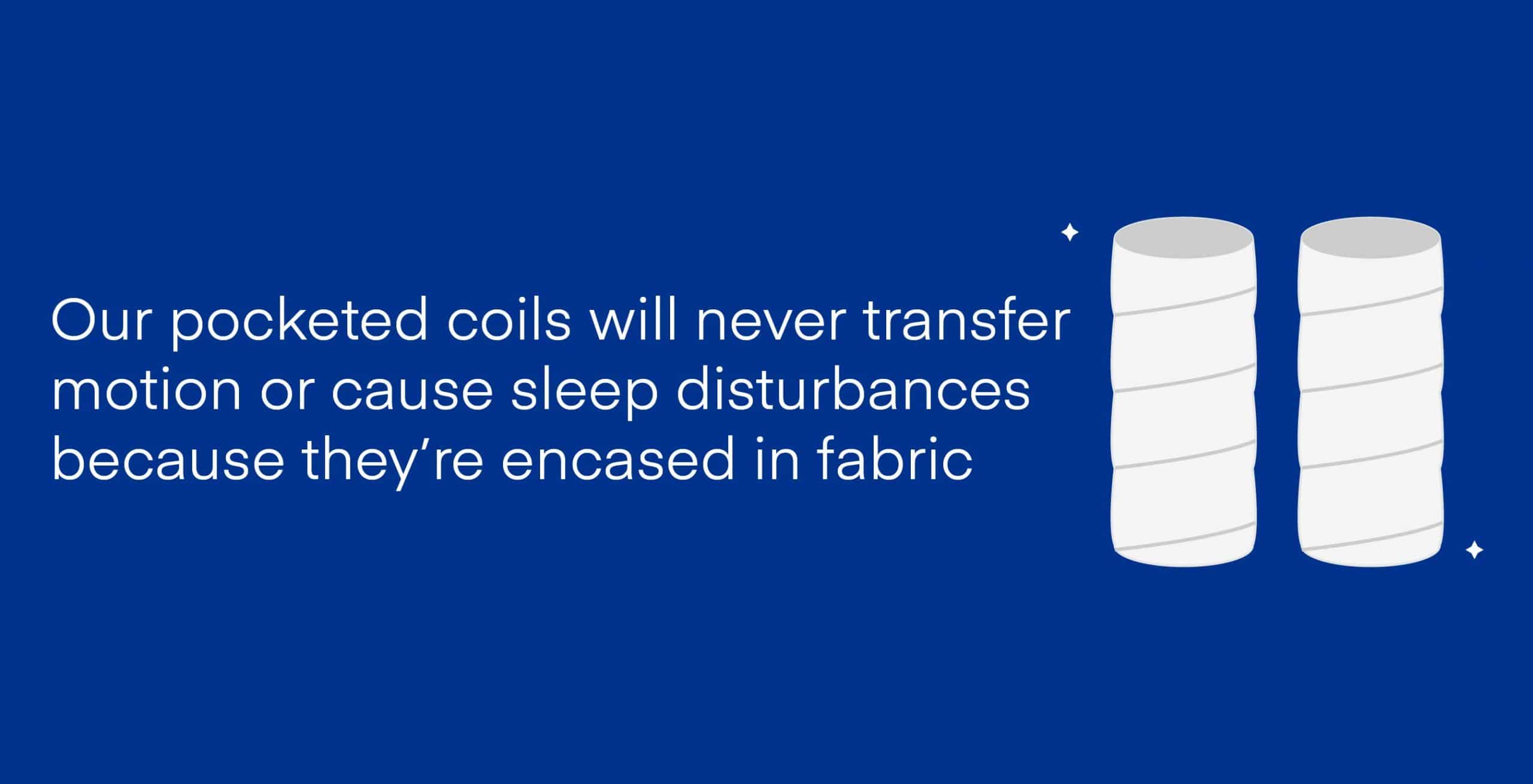
Our hybrid mattresses deliver zoned, full-body support through pocketed coils. We design these coils to offer more support under your torso and less give under your shoulders and hips to provide the same benefits of HIVE® technology and promote healthy sleeping positions. Plus, our pocketed coils will never transfer motion or cause sleep disturbances because they’re encased in fabric and move independently of each other.
No-Risk, 100-Night Sleep Trial
Amerisleep offers a 100-night trial with each of their beds. This risk-free sleep trial allows the customer to try out the bed in their own home for over three months— with their own bed frame, bedding, and partner if they have one. Amerisleep does ask that you try out the mattress for at least 30 nights since this time period allows for your body to adjust to the feel of the new bed. After 30 nights and before 100, you can initiate a return and Amerisleep will help you find a place to donate your existing mattress.
Backed by a 20-Year Warranty
The 20-year warranty offered by Amerisleep is one of the longest in the industry. Most memory foam beds last for about 7-10 years; by offering a 20-year warranty, we back up our product for longer than the industry standard. That’s how confident we are in its durability and longevity.
Amerisleep’s warranty, like most mattress companies, covers sagging of some kind. Most companies cover sagging of 1 inch or more, but at this point, the mattress is already beyond uncomfortable and probably causing pain. Amerisleep covers sags when they reach ¾ of an inch deep.
During the first ten years of the warranty, customers can get their mattress replaced or repaired by Amerisleep at no extra cost. After the first ten years, the warranty becomes prorated, meaning customers will pay 50% of the original cost for a replacement or a certain percentage of repair costs, as well as shipping.
Customers must use their Amerisleep mattress on the correct foundation to keep the warranty intact. We recommend using our mattresses on a solid base (not box springs); if you are using slats, they should be no more than 3 inches apart. Additionally, any damage to the mattress caused by improper use is not eligible for warranty coverage.



